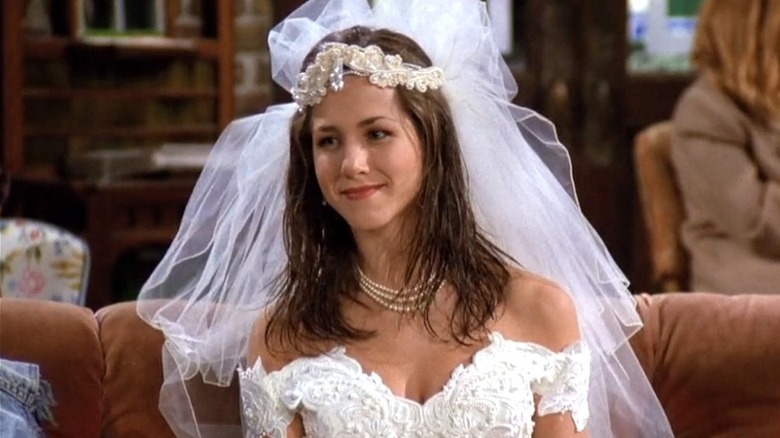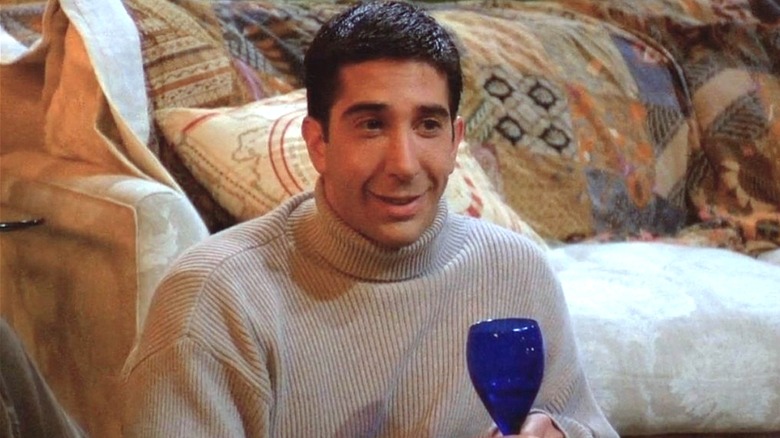Friends: How Many Episodes Are There In Total?
"Friends" might not have a record-breaking number of episodes like fellow comedies "The Big Bang Theory" and "Cheers," but after being on the air for an entire decade from 1994 to 2004, it certainly holds its own. In total, there are 236 episodes of "Friends," which introduced the world to some of the most quotable lines in pop culture ("We were on a break," "He's her lobster," "How you doin'?") and iconic moments in TV history. Could it be any more emotional than when Rachel Green (Jennifer Aniston) gets off the plane to be with Ross Geller (David Schwimmer)?
Each season boasts 24 or 25 episodes, with the exception of Season 10, which stands at 17 episodes. Though it was initially reported that this was due to Aniston's then-husband, Brad Pitt, wanting to spend more time with her, this was refuted by the actor. According to her spokesperson, all six core cast members were OK with a lighter workload after 10 years. However, they did return to Warner Bros. Studio once more for 2021's "Friends: The Reunion," which sees them reminisce on the good ol' days spent in Monica Geller's (Courteney Cox) purple apartment and Central Perk.
The creators of Friends didn't overthink episode titles
While most television shows have clever titles for each episode, that's not the case for "Friends." A major aspect of the series is that, aside from a few exceptions like "The Pilot" and "The Last One," every episode title is a basic description of what happens, typically starting with the phrase "The One with..." or "The One Where..." For example, in Season 1, Episode 7 ("The One with the Blackout"), there is — as expected — a blackout.
According to show creators David Crane and Marta Kauffman, this was done for a specific reason: it was too time-consuming (and unnecessary) to brainstorm 236 unique and strategic titles. In an interview with EW, Crane said, "We'd been on shows where everyone's trying to come up with really pun-y titles and that is not the best use of anyone's time. Let's cut to the chase, it's the one with the thing and now we can move on to actually working on the show itself. Because that's how you always refer to a TV show: 'Did you see the one with the thing?'"
It's a concept that fans have embraced and found ways to adapt to their own lives, and now you see T-shirts, wine glasses, and more emblazoned with phrases like, "The One Where I Turn 30" or, "The One Where She Gets Married."

